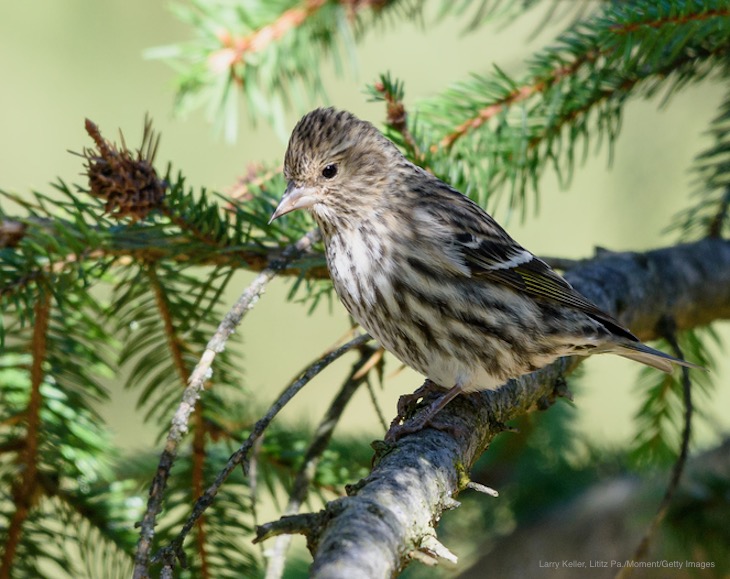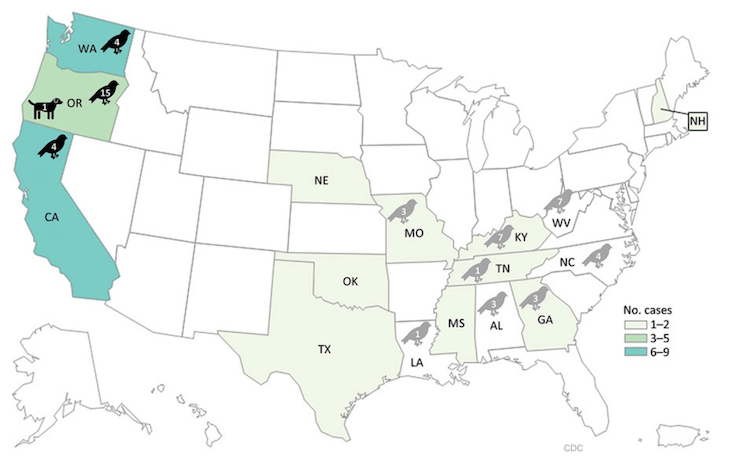Back in 2021 we told you about a Salmonella outbreak that was allegedly linked to wild songbirds. An investigation that was published in Emerging Infectious Diseases found that 30 people in 12 states were sickened in this outbreak. The outbreak of Salmonella Typhimurium was first identified by public health officials in February 2021 in eight patients who lived in Oregon and Washington.

Whole genome sequencing found that the isolates collected from sick people were genetically related to one another as well as to an isolate from a pine siskin bird, which is a type of finch, in Oregon in December 2020.
Investigators used PulseNet, the database that tracks foodborne and waterborne illness in the United States to help solve this outbreak. They also interviewed patients about potential exposures, and conducted postmortem exams of dead song birds that were collected in Oregon, Washington, and California.
There were 20 patients who lived in Oregon, Washington, and California. The rest of the states where ill persons live are: Nebraska, Missouri, Oklahoma, Texas, Kentucky, Tennessee, Mississippi, Georgia, and New Hampshire. They each had one or two patients apiece. The patient age range was from less than one year to 89. Fourteen patients were hospitalized because they were so sick. Illness onset dates ranged from December 26, 2020 to May 19, 2021.

Geographic locations of human Salmonella Typhimurium cases in the United States, 2020–2021. Colored shading indicates number of cases by state; black bird icons indicate states that detected the outbreak strain of Salmonella Typhimurium from this study in wild birds (within 0–12 allele differences based on core genome multilocus sequence typing). One isolate was obtained from a dog’s mouth wound at a veterinary hospital in Oregon (dog icon) and matched the outbreak strain. Numbers of genetically related isolates obtained from wild birds are indicated within animal icons. Salmonella Typhimurium was also detected in wild birds as part of the Southeastern Cooperative Wildlife Disease Study at the University of Georgia (gray bird icons); those isolates were serotyped at the National Veterinary Services Laboratory (30), but whole-genome sequencing was not performed to confirm relatedness to the outbreak strain.
Of the 22 patients who were interviewed, 14 said they had a bird feeder on their property. Seven came into contact with living or dead songbirds the week before they got sick. Eighteen of the patients had dogs, and seven had cats. Overall, 16 of those cases could be linked to wild bird exposure, either by direct contact, contact with bird feeders, or indirect contact with pets who may have come into contact with birds.
The authors wrote, “”This outbreak of Salmonella Typhimurium demonstrates the ongoing need to raise public awareness of the potential to acquire Salmonella from wild animals such as songbirds. Persons should avoid direct contact with wild birds, particularly those that are visibly sick or dead, and should wash their hands after any contact with birds, feeders, or baths, even if wearing gloves.”
Wildlife experts in some of these states did note an increase in reports of sick and dead songbirds in and around birdfeeders during this outbreak. Sequencing 23 Salmonella isolates from dead birds in Oregon, Washington, and California found that the pathogens were genetically related to each other and the outbreak strain, as was an isolate from a dog in Oregon.
The outbreak strain was not confirmed in birds in all states where patents live, but experts think that the presence of bird feeders attracted migratory songbirds like pine siskins. That provided a source of exposure.
Experts advise that people should stay away from wild birds, and should also prevent their pets from contacting wild birds, birdfeeders, spilled seed, and birdbaths to reduce their potential for exposure to pathogens like Salmonella. They wrote, “Given the repeated detection of this outbreak strain over time and the periodic deaths associated with Salmonella in some wild birds, it is possible for further illness to arise in persons or their pets in the United States.”
Patel K, Stapleton GS, Trevejo RT, Tellier WT, Higa J, Adams JK, et al. Human salmonellosis outbreak linked to Salmonella Typhimurium epidemic in wild songbirds, United States, 2020–2021. Emerg Infect Dis. 2023 Nov [date cited]. https://doi.org/10.3201/eid2911.230332





The article repeatedly mentions “Oregon, Washington, and California”. However, the title says “12 states”. What are the other 9 states?!
The article from CIDRAP didn’t state which states are part of this outbreak. I looked further at CDC information and found a map detailing the states where people got sick. They are: Washington, Oregon, California, Nebraska, Missouri, Oklahoma, Texas, Kentucky, Tennessee, Mississippi, Georgia, and New Hampshire. I added the map to the article. All states other than Oregon, Washington, and California only had one or two cases. And the link is fixed.